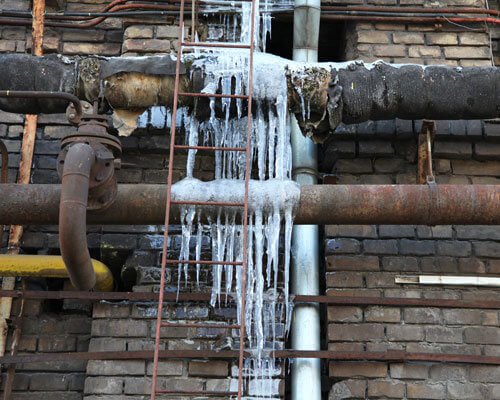Essential Tips to Prevent Frozen Plumbing in Cold Weather: Professional Guidance
Essential Tips to Prevent Frozen Plumbing in Cold Weather: Professional Guidance
Blog Article
Right here on the next paragraphs you can get lots of incredibly good data concerning How To Avoid Freezing Pipes.

Winter can wreak havoc on your pipes, especially by freezing pipes. Here's just how to prevent it from occurring and what to do if it does.
Intro
As temperatures decrease, the risk of frozen pipes boosts, potentially causing pricey repairs and water damages. Understanding just how to avoid frozen pipelines is critical for home owners in cool climates.
Recognizing Icy Pipelines
What triggers pipelines to freeze?
Pipes ice up when exposed to temperature levels below 32 ° F (0 ° C) for prolonged periods. As water inside the pipelines ices up, it increases, putting pressure on the pipeline wall surfaces and potentially creating them to burst.
Dangers and problems
Icy pipes can lead to water supply disruptions, building damages, and pricey repairs. Ruptured pipelines can flood homes and trigger extensive architectural damages.
Indications of Frozen Pipes
Determining icy pipes early can stop them from breaking.
Exactly how to identify frozen pipes
Look for decreased water flow from taps, uncommon smells or noises from pipelines, and visible frost on subjected pipelines.
Prevention Tips
Shielding at risk pipelines
Wrap pipes in insulation sleeves or utilize heat tape to protect them from freezing temperatures. Focus on pipes in unheated or exterior areas of the home.
Heating techniques
Keep indoor rooms appropriately heated up, specifically locations with pipes. Open closet doors to enable warm air to distribute around pipes under sinks.
Shielding Outdoor Plumbing
Yard tubes and outside taps
Separate and drain pipes yard hoses prior to winter months. Install frost-proof spigots or cover exterior taps with shielded caps.
What to Do If Your Pipelines Freeze
Immediate activities to take
If you presume frozen pipes, keep faucets open up to eliminate stress as the ice melts. Use a hairdryer or towels soaked in warm water to thaw pipelines slowly.
Long-Term Solutions
Structural modifications
Think about rerouting pipes far from exterior wall surfaces or unheated locations. Include extra insulation to attic rooms, cellars, and crawl spaces.
Updating insulation
Buy high-quality insulation for pipes, attics, and walls. Correct insulation helps maintain constant temperatures and reduces the risk of icy pipes.
Conclusion
Avoiding icy pipelines calls for aggressive actions and fast feedbacks. By comprehending the causes, indicators, and safety nets, homeowners can secure their plumbing during cold weather.
5 Ways to Prevent Frozen Pipes
Drain Outdoor Faucets and Disconnect Hoses
First, close the shut-off valve that controls the flow of water in the pipe to your outdoor faucet. Then, head outside to disconnect and drain your hose and open the outdoor faucet to allow the water to completely drain out of the line. Turn off the faucet when done. Finally, head back to the shut-off valve and drain the remaining water inside the pipe into a bucket or container. Additionally, if you have a home irrigation system, you should consider hiring an expert to clear the system of water each year.
Insulate Pipes
One of the best and most cost-effective methods for preventing frozen water pipes is to wrap your pipes with insulation. This is especially important for areas in your home that aren’t exposed to heat, such as an attic. We suggest using foam sleeves, which can typically be found at your local hardware store.
Keep Heat Running at 65
Your pipes are located inside your walls, and the temperature there is much colder than the rest of the house. To prevent your pipes from freezing, The Insurance Information Institute suggests that you keep your home heated to at least 65 degrees, even when traveling. You may want to invest in smart devices that can keep an eye on the temperature in your home while you’re away.
Leave Water Dripping
Moving water — even a small trickle — can prevent ice from forming inside your pipes. When freezing temps are imminent, start a drip of water from all faucets that serve exposed pipes. Leaving a few faucets running will also help relieve pressure inside the pipes and help prevent a rupture if the water inside freezes.
Open Cupboard Doors
Warm your kitchen and bathroom pipes by opening cupboards and vanities. You should also leave your interior doors ajar to help warm air circulate evenly throughout your home.

We had been shown that article about Helpful Tips to Prevent Frozen Pipes this Winter from a good friend on our other site. Sharing is good. Helping people is fun. Thanks for your time. Kindly check our blog back soon.
Contact Us Today Report this page